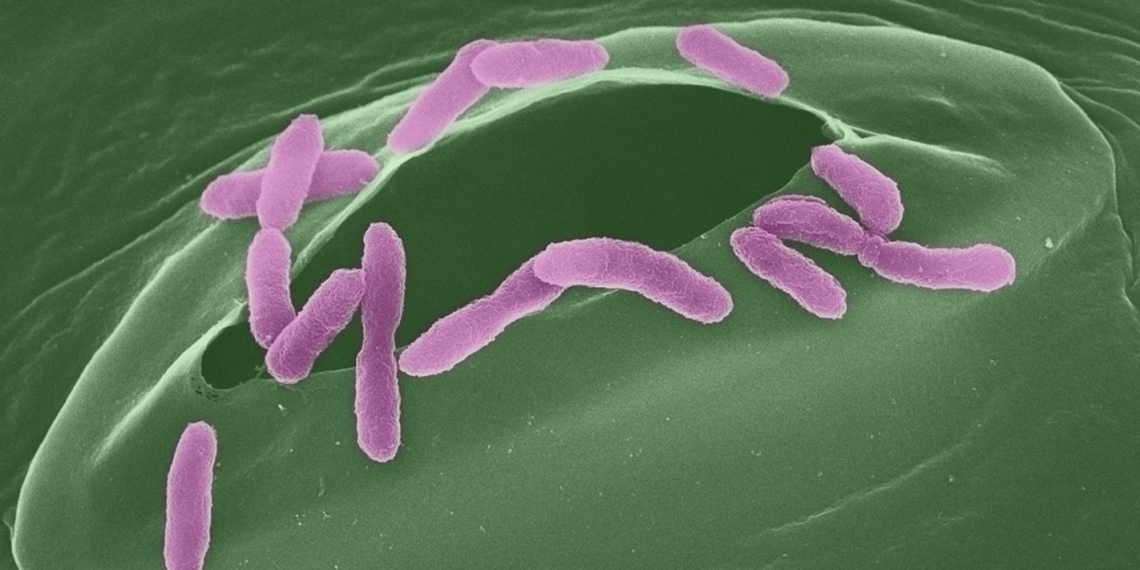How colonization of beneficial Pseudomonas strains protects against their harmful bacterial relatives: Researchers at the Max Planck Institute for Biology in Tübingen, Germany, have now found out. Their study, now published in Nature Ecology & Evolution, shows that the coexistence of benign and pathogenic Pseudomonas bacteria on the leaves of the model organism Arabidopsis thaliana improves the health of the plant. The exact extent of the protective mechanism depends on the genetic characteristics of both the plant and the microbes. The results could help develop natural alternatives to synthetic pesticides.
Microbes live on the leaves of plants, much like they do on the skin or in the intestines of humans. Microbial colonization can be beneficial to health, but it can also cause disease. A research team led by Or Shalev and Detlef Weigel aimed to better understand the benefits to the plant when both pathogenic and so-called commensal strains of Pseudomonas coexist on Arabidopsis thaliana leaves. Commensals are microbes that live on organisms and have either positive or neutral effects on the host. In particular, we investigated what effect commensals have on their harmful relatives and how they thereby exert their plant-protective effects.
“The result of a previous study by our department raised the question of how plants can harbor pathogens and still remain healthy. In agriculture, many methods such as using pesticides or pruning plants are used to get rid of pathogens, so it’s surprising to observe that many wild plants can live in harmony with their pathogens.”
- Or Shalev, study leader
Under conditions as close to nature as possible, the scientist:infected one group of plants with commensals only, another with harmful pathogens only, and a third group with a mixture of benign and pathogenic Pseudomonas strains. The goal was to simulate the transmission of bacteria by wind and rain and to grow the plants in soil rather than in typical growing plates. Using the method of “genome barcoding”, genetically closely related representatives could be distinguished from each other.
Genetic variation relevant: both in the plant and in the bacteria
The research team observed that colonization of commensal Pseudomonas stimulated an immune response in the plant that suppressed the growth of its related pests. “This is an unusual result because all infected bacteria were from the same genus and this immune response only specifically addressed one pathogenic lineage. In addition, the commensal consortium included a variety of commensal species, but none of them were inhibited by the plant. This is further evidence of how specific the immune response mediated by the plant was,” Shalev points out.
However, defense against the pathogens could not be detected in all plants. Whether protection against pathogenic Pseudomonas works depends very much on the genetic characteristics of both the plant and the bacteria that colonize it. “Another important aspect of our work was to identify and describe an existing collective protective effect. We did not single out individuals as actors, but a synergy of the collective,” Shalev explains.
Implications for agriculture
The newly gained knowledge could be of great importance for agriculture. The mechanisms of how plants can coexist in harmony with pathogens still need to be understood in detail. However, the results from follow-up studies could be key to developing novel solutions in agriculture to reduce the use of synthetic pesticides.

















